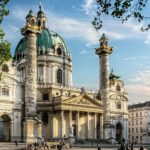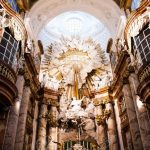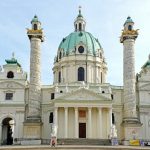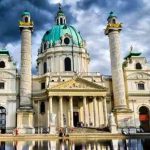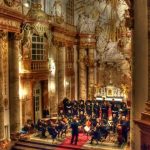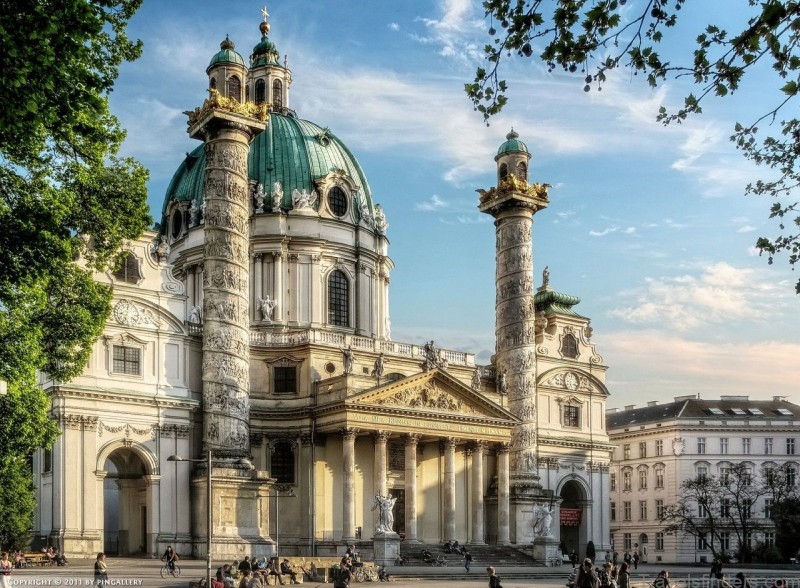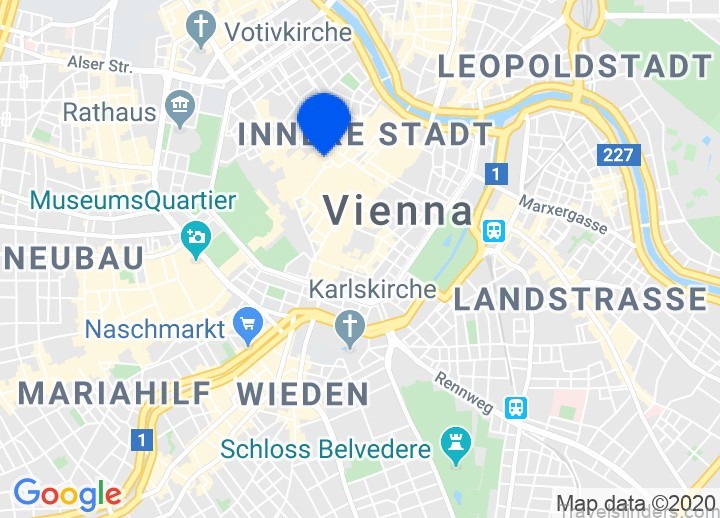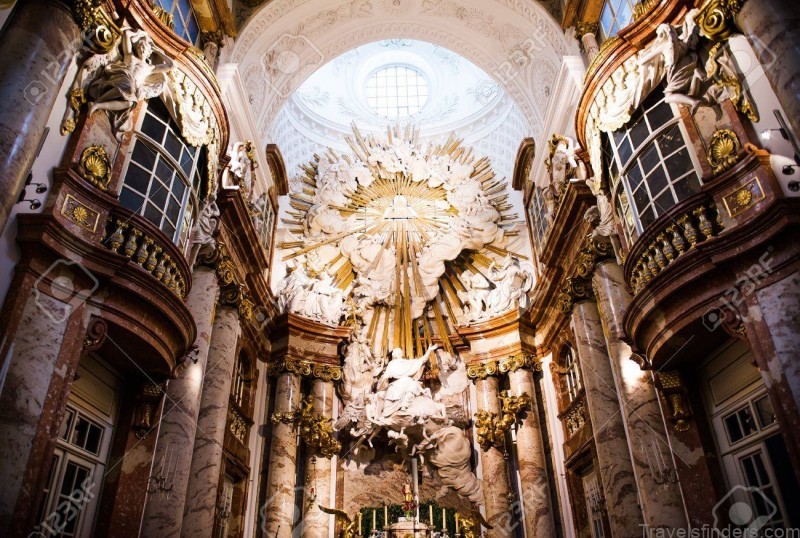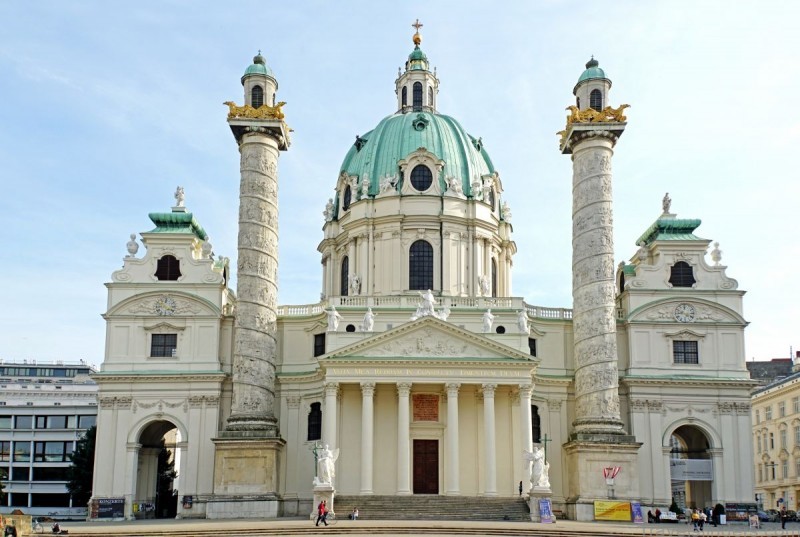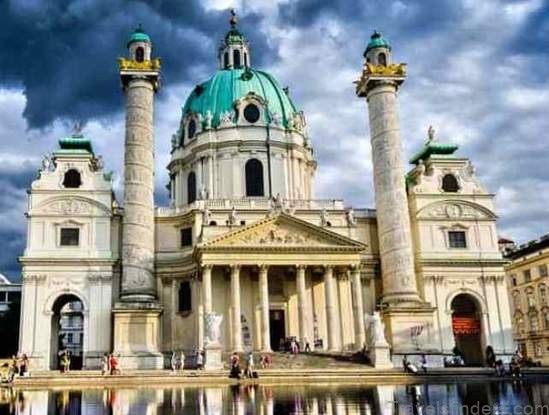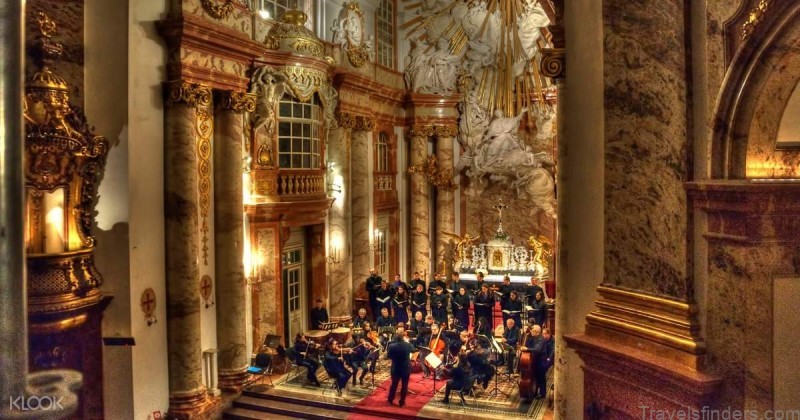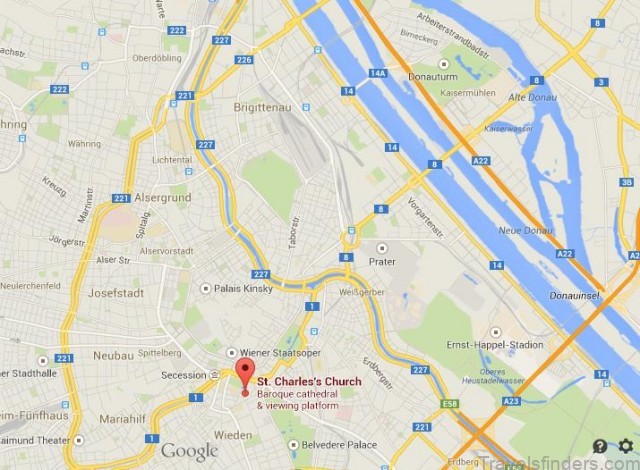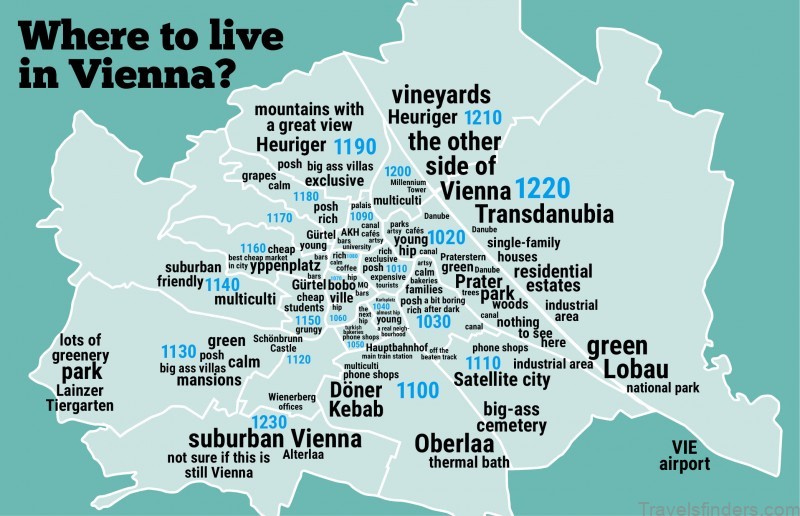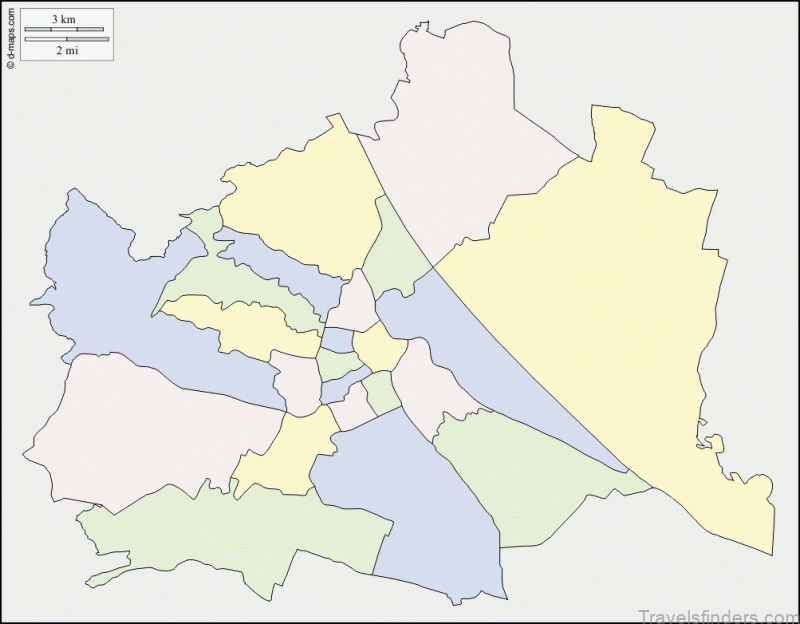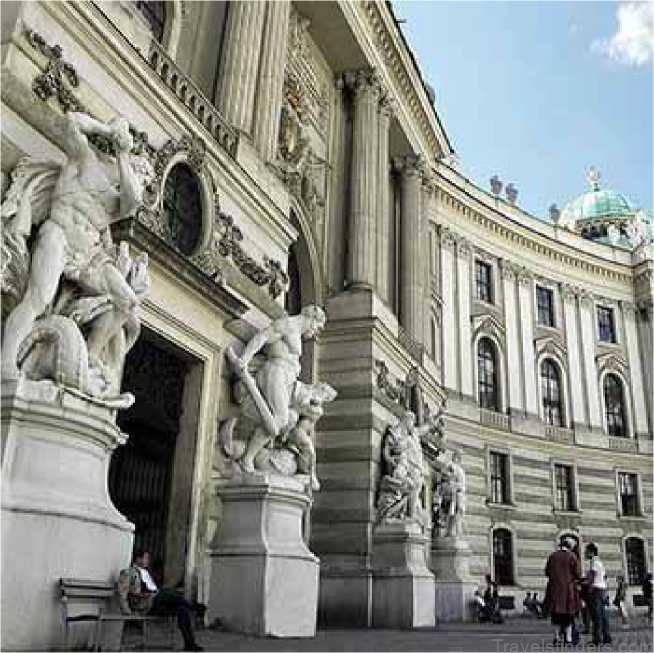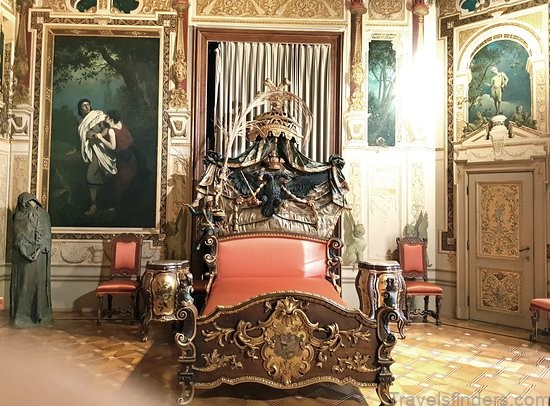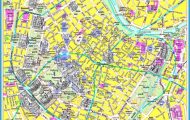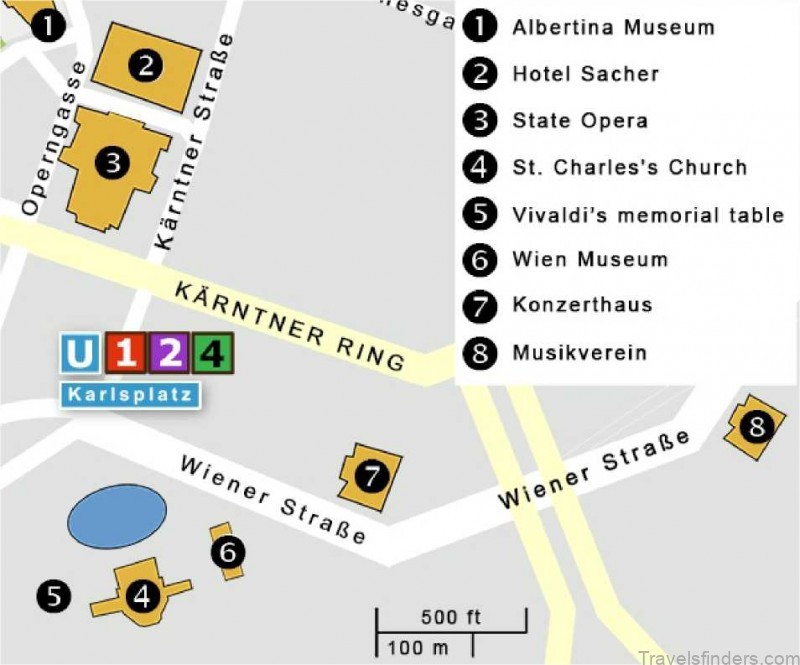ST. CHARLES’S CHURCH -DOLLAR SIGNS ON THE MINARET COLUMNS
THE SPECTACULAR DOME OF ST. CHARLES’S CHURCH AND ITS TWO FLANKING COLUMNS OF LOW-RELIEFS QUIETLY CARRY THIS GREAT BAROQUE ARCHITECT’S VERY SPECIAL SECRET.
After the end of the last great plague in Vienna in 1713, Emperor Charles VI1 decided to erect a church in honor of his namesake patron saint, Saint Charles Borromeo, the patron saint of plague victims. Johann Bernhard Fischer von Erlach was the final winner of the architecture competition for St. Charles’s Church. He had already built Schonbrunn Castle, the Imperial Library3 and the Imperial Stables.
Johann Bernhard Fischer von Erlach5 , deeply impressed by the architecture of Greek-Eastern Roman Constantinople and Islamic Istanbul, included all the elements of a Turkish mosque in his design of St. Charles’s Church. He accentuated the Byzantine dome with the two columns. His role model was the great architect of the Ottoman Empire, Ko$a Mimar Sinan, who had created the pin-like minaret columns of the Hagia Sophia. Ko$a Mimar Sinan, curiously enough, was originally from the same Austrian state Styria as Johann Bernhard Fischer von Erlach.
St. Charles’s Church is a deliberate homage of Johann Bernhard Fischer von Erlach to the sacred architecture of the Orient. Was it not contradictory to the strict Catholic world view of the Habsburg who commissioned the church to adorn the sacred building with oriental elements? – Not at all. Already before Emperor Charles VI came to Vienna in 1711 to take over the imperial throne of the Holy Roman Empire, he had seen Moorish elements homogeneously being incorporated into worldly, as well as sacred architecture during his childhood in Spain after the Reconquista.
Map of St. Charles’s Church | Karlskirche
St. Charles Church Vienna Photo Gallery
The low-reliefs on both of the minaret-like columns of St. Charles’s Church cite the low-reliefs of Trajan’s Column in Rome. Due to the baroque passion for symbolism, they also allude to the columns of Solomon’s Temple, as well as to the “Pillars of Hercules.’
The “Pillars of Hercules” were the two promontories of Gibraltar that in Classical Antiquity were believed to be the end of the world. In this way the architect emphasized the entitlement of the Habsburgs to their imperial world supremacy.
There is even more symbolism. The depictions of the two “Pillars of Hercules”, entwined by an S-shaped scroll, originate from the coat of arms of the Spanish king and German emperor of the Holy Roman Empire, Charles V6 . Still today you find them in the dollar sign of the United States and as a linear symbol in the euro sign. So when you are standing in front of St. Charles’s Church, you are actually looking at the vertical lines of the dollar sign or the horizontal lines of the euro sign.
On Karlsplatz not only the splendid St. Charles’s Church attests to the Baroque Era. To the right of the church, on the facade of the old University of Technology, a simple plaque commemorates one of the greatest composers of the Baroque, the Venetian composer Antonio Vivaldi7 who died in Vienna and was also buried here.

